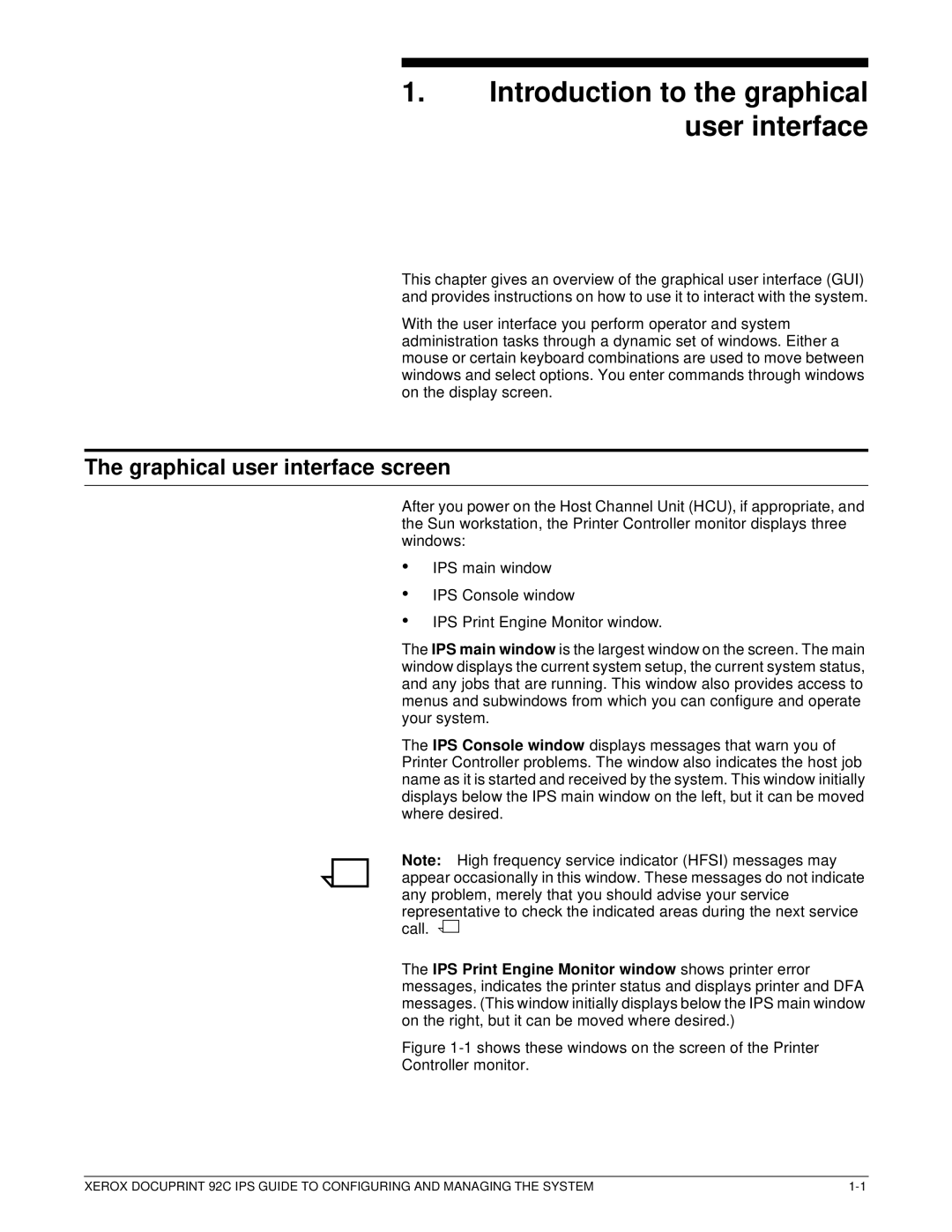
1.Introduction to the graphical user interface
This chapter gives an overview of the graphical user interface (GUI) and provides instructions on how to use it to interact with the system.
With the user interface you perform operator and system administration tasks through a dynamic set of windows. Either a mouse or certain keyboard combinations are used to move between windows and select options. You enter commands through windows on the display screen.
The graphical user interface screen
After you power on the Host Channel Unit (HCU), if appropriate, and the Sun workstation, the Printer Controller monitor displays three windows:
•
•
•
IPS main window
IPS Console window
IPS Print Engine Monitor window.
The IPS main window is the largest window on the screen. The main window displays the current system setup, the current system status, and any jobs that are running. This window also provides access to menus and subwindows from which you can configure and operate your system.
The IPS Console window displays messages that warn you of Printer Controller problems. The window also indicates the host job name as it is started and received by the system. This window initially displays below the IPS main window on the left, but it can be moved where desired.
Note: High frequency service indicator (HFSI) messages may appear occasionally in this window. These messages do not indicate any problem, merely that you should advise your service representative to check the indicated areas during the next service call. ![]()
![]()
The IPS Print Engine Monitor window shows printer error messages, indicates the printer status and displays printer and DFA messages. (This window initially displays below the IPS main window on the right, but it can be moved where desired.)
Figure 1-1 shows these windows on the screen of the Printer Controller monitor.
XEROX DOCUPRINT 92C IPS GUIDE TO CONFIGURING AND MANAGING THE SYSTEM |
